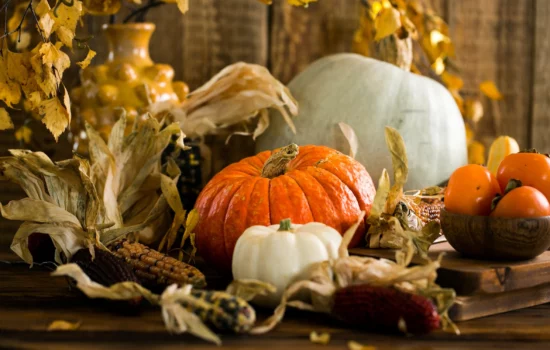How to Prepare Your Diners for Potential Food Allergies This Fall

Fall is in the air! As a restaurant owner, you already know that guests turn out in swarms, eager to taste the fall-themed items you add to the menu.
While seasonal ingredients are all the rage during the fall season, some harvest-themed recipes have trace amounts of common allergens that could severely impact guests.
We’ve already discussed how to create an allergy-friendly menu. Let’s take a closer look at what you and your staff can do during the holiday season to go the extra mile for your guest’s safety.
Add Allergy Statement to Menu
Even if you already have an allergy-friendly menu, it never hurts to add an extra statement to your existing menu that helps your allergy warning stand out.
Our recommendation is to put in bold text near the top or bottom of your menu that there is a presence of allergens in the kitchen. Make it clear that if guests have any questions about a meal’s specific ingredients, your staff is prepared to help.
Detailed Ingredient Lists On-Hand
Sometimes just listing the general ingredients on your menu isn’t enough to protect guests from an allergic reaction. During autumn, chefs love to include seasonal favorites like cranberries, apples, pumpkin, squash and sweet potatoes.
One way to stay on top of guest safety is to create detailed lists of these ingredients for the items on your menu. Patrons questioning the ingredients of your recipes will appreciate the extra action taken to ensure they can enjoy their meal without the risk of a deadly attack.
Create “Daily Specials” Menu
For busier nights when your staff may not have the time to pull out an ingredient list, we recommend creating a series of special menus with the full list of fall-themed ingredients.
These can be an alternative to your standard menu and are a quick way to give allergen-wary guests the information they need to make the right choices for their seasonal meals.
Improve Back of House/Front of House Communication
Communication between the wait staff and kitchen staff is essential to address potential food allergy issues. Aside from standard food allergy training, it’s also necessary for your front and back of the house to stay in sync with what’s on the menu for the evening.
This ensures that everyone on your team understands the potential for food allergies in current ingredients and the proper information gets relayed to patrons.
Designate Areas and Equipment for Foods with Allergens
No matter how careful a customer is about their food selection, cross-contamination behind the scenes can sneak allergens into the safest choices.
Prevent cross-contamination at the start and create designated areas where allergen-present food is prepped. Along with an established location for special prep, ensure there is designated equipment for this prep that isn’t used on your “safety ingredients.”
Write Down Your Plans
All allergen prevention plans are for naught if you keep them in your head and only dictate them to your staff. Most verbal information will be forgotten, and eventually, someone will slip up.
Write down your seasonal allergen prevention plans and post them throughout the BOH and FOH so employees will always know the responsibilities they hold while on shift.
Find the Latest Allergen Prevention Tips with Certified On The Fly!
Allergic reactions from customers are nothing you, your staff, or your restaurant’s reputation want on the record. Ensuring you and your employees are certified food handlers is critical to your guests’ safety.
Rather than having them sit in a classroom, your employees can take our online course that gets them certified at their own pace.
Register online today to get your team food handler certified in time for the fall and holiday rush!
Back to Blog